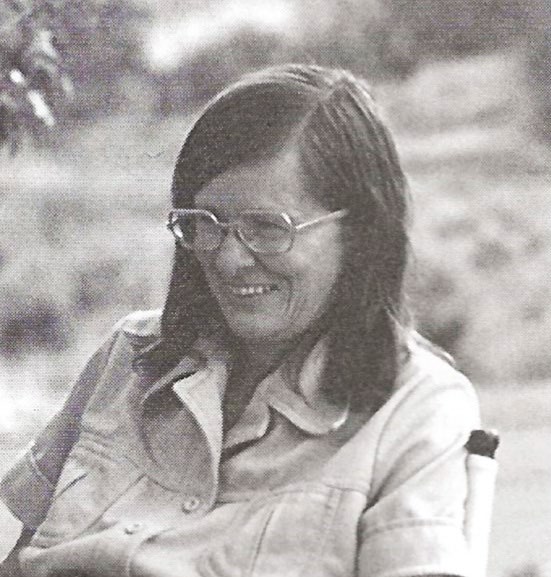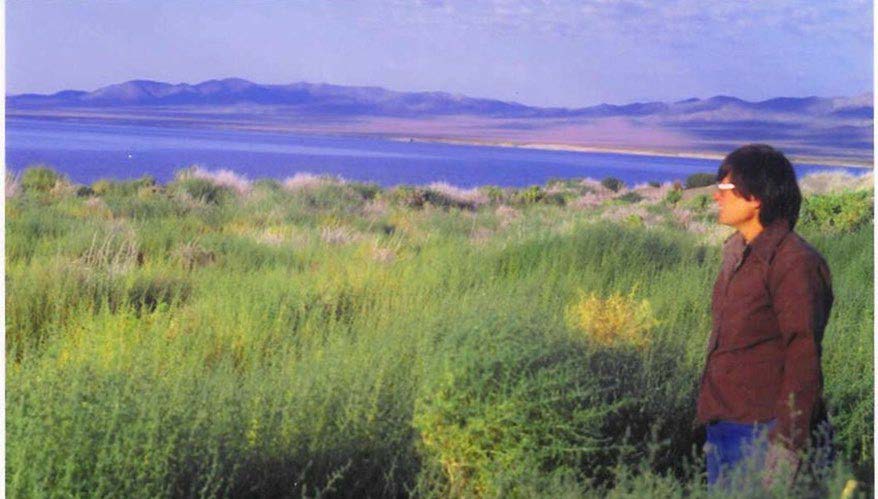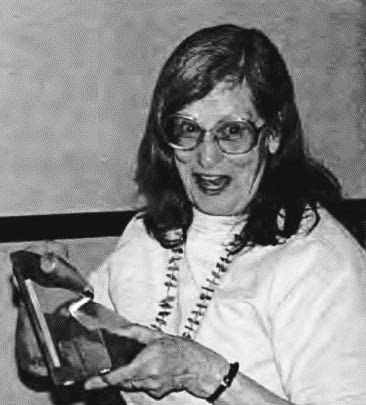The information below has been compiled from a variety of sources. If the reader has access to information that can be documented and that will correct or add to this woman’s biographical information, please contact the Nevada Women’s History Project.

Courtesy the Nevada Historical Society Quarterly, Fall 2005.
At a Glance:
Born: Topeka, Kansas, May 28, 1927
Died: Reno, Nevada, May 23, 2005
Maiden Name: Mary Louise Kiehl
Race: Caucasian
Married: Elmer R. Rusco, June 20, 1955
Children: Kathy and Frank
Primary City/County of Work: Reno, Washoe County, Nevada
Major Fields of Work: Archaeology and Anthropology
Biography:
Archaeologist uncovered Nevada’s history, prehistory
Without the diligent and detailed work of Mary Kiehl Rusco, much of the history of Nevada’s distant past might not be known. A respected archaeologist and anthropologist, she led teams that dug into the lives of various peoples and animals that dwelled in the state’s more remote Great Basin areas over the past centuries.
Born Mary Louise Kiehl in Topeka, Kansas, to Claude and Addie Jo Kiehl in 1927, Mary was educated in Kansas, Nebraska, Nevada and California, getting her Master of Arts in Anthropology at the University of Nevada. She was close to receiving her doctorate at the University of California, Davis, but left there for the chance of working as an ethnographer in southern Nevada and eastern California with Dr. Catherine Fowler of the University of Nevada.
She was married to a University of Nevada political science professor and noted Nevada civil rights activist Elmer Rusco.
In early adulthood, she joined the League of Women Voters, and with the YWCA, organized students to be volunteers at the university. She was a lifelong member and leader in Reno’s Universal Unitarian Fellowship.
When she was a research assistant of the Nevada Archaeological Survey, she taught others the proper methods of recording archaeological sites. In 1967, she first worked as records manager for the Nevada Archaeology Society.
In the 1970s, Rusco started making her mark on Nevada’s historical record. As an employee of the University of Nevada, she made a presentation at a Western History Conference on archaeology findings in the Pyramid Lake Region and the Reese River Valley. In 1974, she became director of the Nevada Archaeological Survey, a position she held until 1983.
In 1972, Nevada Bell wanted to dig a long underground cable, and Rusco was directing an archaeological survey of the path the phone company wanted to take. Around the southern tip of the Black Rock Desert, she found the only buried historical site along the cable’s route, which was unusual because of the lack of soil there. She found that the area may have been settled as much as 6,000 years ago and had shells from the Pacific Ocean. She thanked Nevada Bell for donating money to the research, since, as she said, “When a major earth-moving project goes through, a certain number of archaeological remains will be ruined. And archaeology exists only once.”
In 1977, she was part of the discovery of a large cache of gold coins near Lovelock that made headlines around the country. The Nevada State Museum’s excavation of the site of a former Chinese community there found $26,000 worth of gold coins in a crockery pot buried beneath a house. To protect the integrity of the site, news of the find was not divulged for three months, and the coins were brought by armored trucks to the Nevada State Museum in Carson City. Other items found at the site included chopsticks, opium bottles, household items, and utensils. Research at the dig contributed greatly to the knowledge of Chinatowns in the West. She later wrote a detailed article about the Asian population in the state for the Nevada Historical Society Quarterly, called “Counting the Lovelock Chinese,” which compiled information about the numbers of people, their ages, their movement throughout the area, and their professions.

As Staff Archaeologist for the State Museum, Rusco was part of a task force that studied an area along the shores of the Rye Patch Reservoir in Pershing County. It included many late Pleistocene, or Ice Age, mammoth, camel, horse, and bison bones. Originally stumbled upon by a Lovelock family, the site turned into a major archaeological find.
Rusco worked on sites at the Tosawihi Quarry, Carlin Bypass, Fort Churchill, and Treaty Hill. In 2000, with Dr. Catherine Fowler, Rusco helped the Timbisha Shoshone tribe recover ancestral tribal lands within Death Valley National Monument, now Death Valley National Park. She presented many lectures on these digs at events around the state, including at the Gold Hill Hotel. One talk was called “10,000 Years on the Humboldt River.”

Receiving the Silver Trowel from the Nevada Archaeological Association, 2004.
She had a regular correspondence with the Reno Gazette Journal’s historical columnist Phillip Earl. He pointed out in one column the important work she did with staff archaeologist of the Nevada State Office of Historic Preservation, Dr. Eugene Hattori, documenting much of the historical record of the Stewart Indian School in Carson City.
In May of 2004, Rusco was presented with the first ever Lifetime Achievement Award (the Silver Trowel) from the Nevada Archaeological Association. She was acknowledged for her many contributions to the field and her key roles in starting and leading important excavations for the state museum and other organizations from the 1960s on.
She was actively involved in research until shortly before her death in Reno on May 23, 2005, at the age of 77. She left behind two children, Kathy and Frank, and two grandchildren, Maia and Miles. Her memorial service was held at her beloved Universal Unitarian Church in Reno, where she and Elmer have markers on the walking trail.

In his article memorializing Rusco, Dr. Hattori said she was a kind and generous person who loved field work. “She provided many aspiring archaeologists with opportunities to undertake positions of responsibility,” he wrote. “Many professional archaeologists worked under Mary’s supervision when they were high school and university students. I am fortunate to count myself one of Mary’s ‘students.’”
Researched by Patti Bernard, written by Kitty Falcone. Posted March 29, 2023.
Sources of Information
- “Archaeologists slate meeting.” Reno Evening Gazette (Reno, Nevada), 7 April 1970, p.5.
- “Desert needs Sen. Bryan’s bill.” Reno Evening Gazette (Reno, Nevada), 22 Sept.2000, p. 11A; Sec. Letters to the Editor.
- Earl, Phil. “Memories of Stewart Indian School emerge.” Reno Gazette-Journal (Reno, Nevada), 15 Feb. 1998, p. 48.
- Hattori, Eugene M. “In Memoriam, Mary K. Rusco 1927-2005,” Nevada Historical Society Quarterly, Fall 2005, p. 391-393,
- “In Loving Memory.” Reno Gazette Journal (Reno, Nevada), 12 June 2005, p 9B. Sec. Obituaries.
- “Married at St. Benedict’s Catholic Church.” Kansas City Star (Kansas City, Missouri), 22 Dec. 1946, p. 11.
- “Pershing archaeological dig set after ancient fossils found.” Reno Evening Gazette (Reno, Nevada), 24 July 1978, p. 19.
- “Prehistoric Finds by Nevada Bell Archaeologists.” Nevada State Journal (Reno, Nevada), 17 June 1972, p. 10.
- “Six Gal have joined forces…” Reno Evening Gazette (Reno, Nevada), 4 Feb. 1965, p.12.
- Staff Report. “Historic preservation award winners named-finally honored.” Reno Gazette-Journal (Reno, Nevada), 9 May 2004, p.5C.
- “Unitarian Fellowship Elects Officers.” Nevada State Journal (Reno, Nevada), 5 June 1976, p.5.
- “Western history session brings scholars to Reno.” Reno Evening Gazette (Reno, Nevada), 8 Oct. 1970, p. 8.

